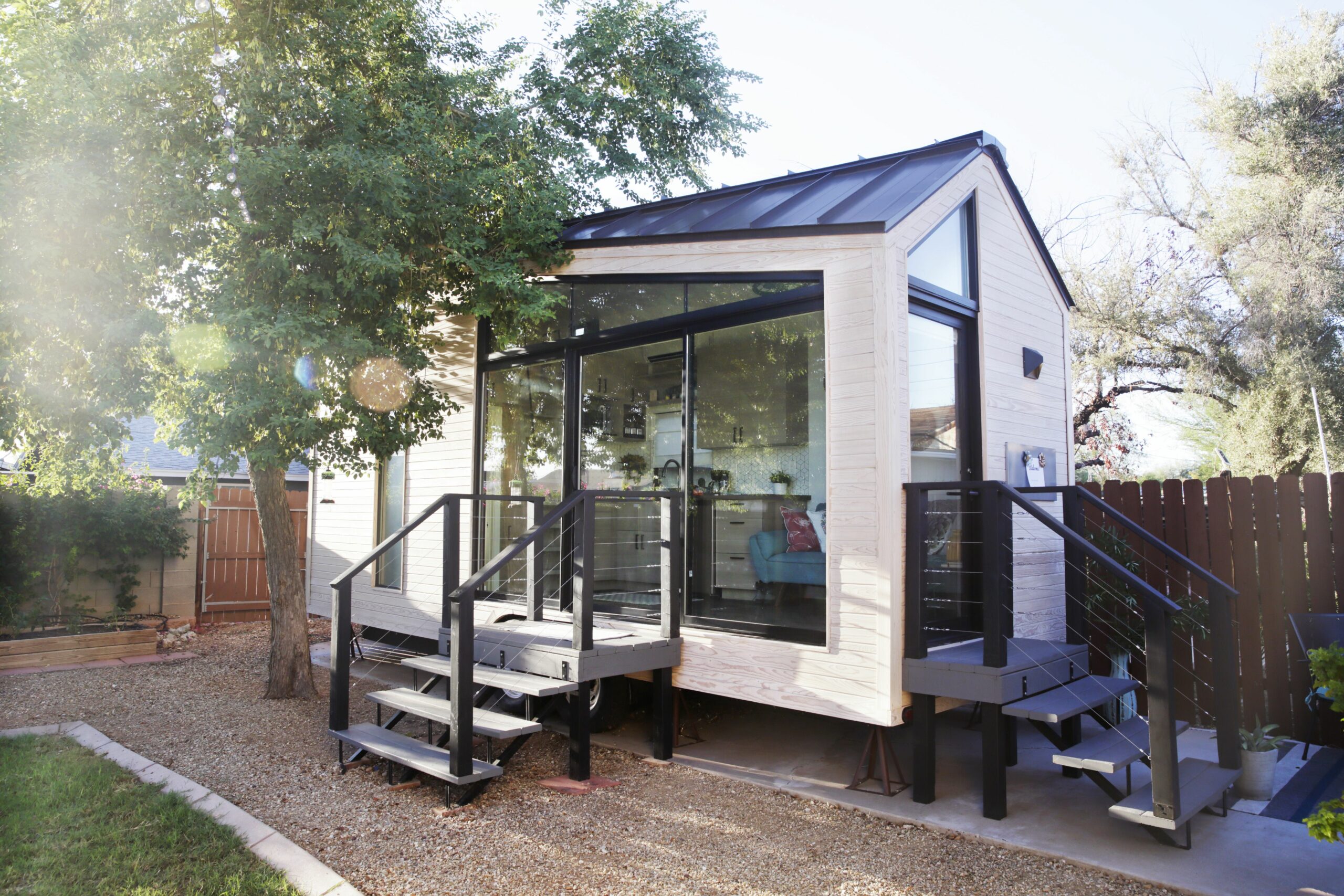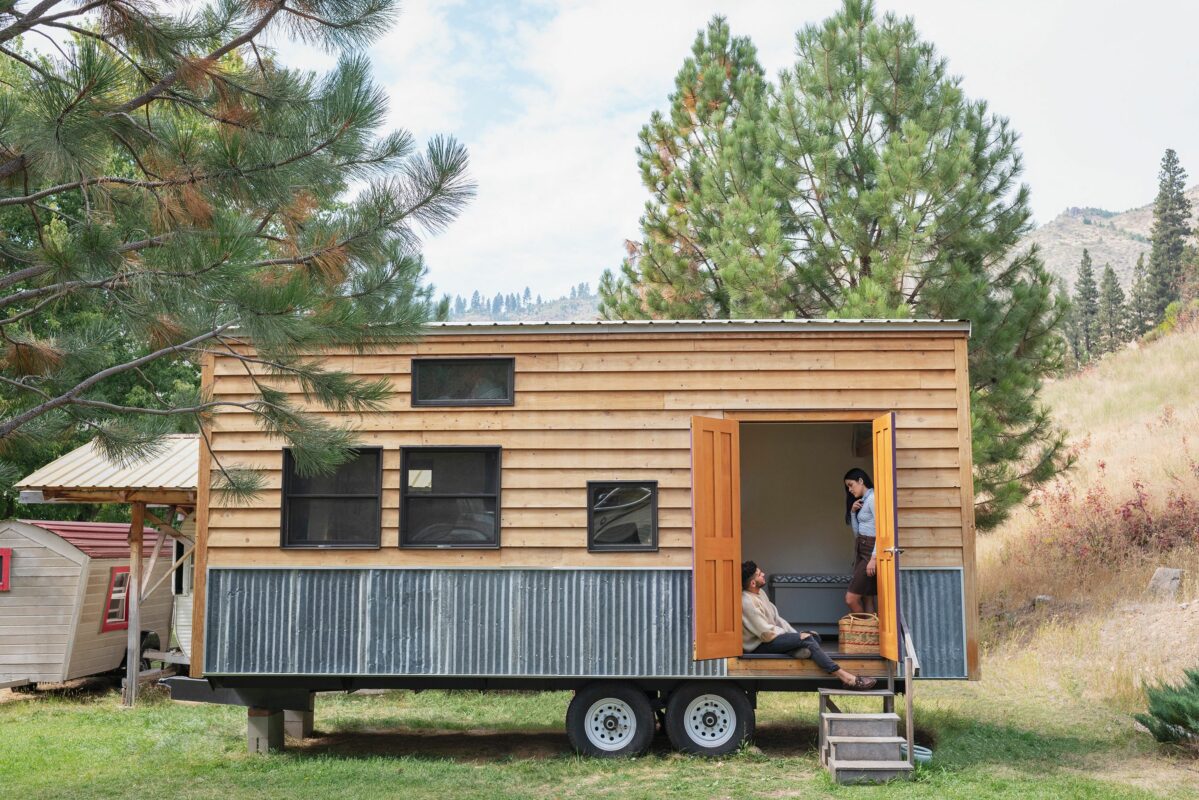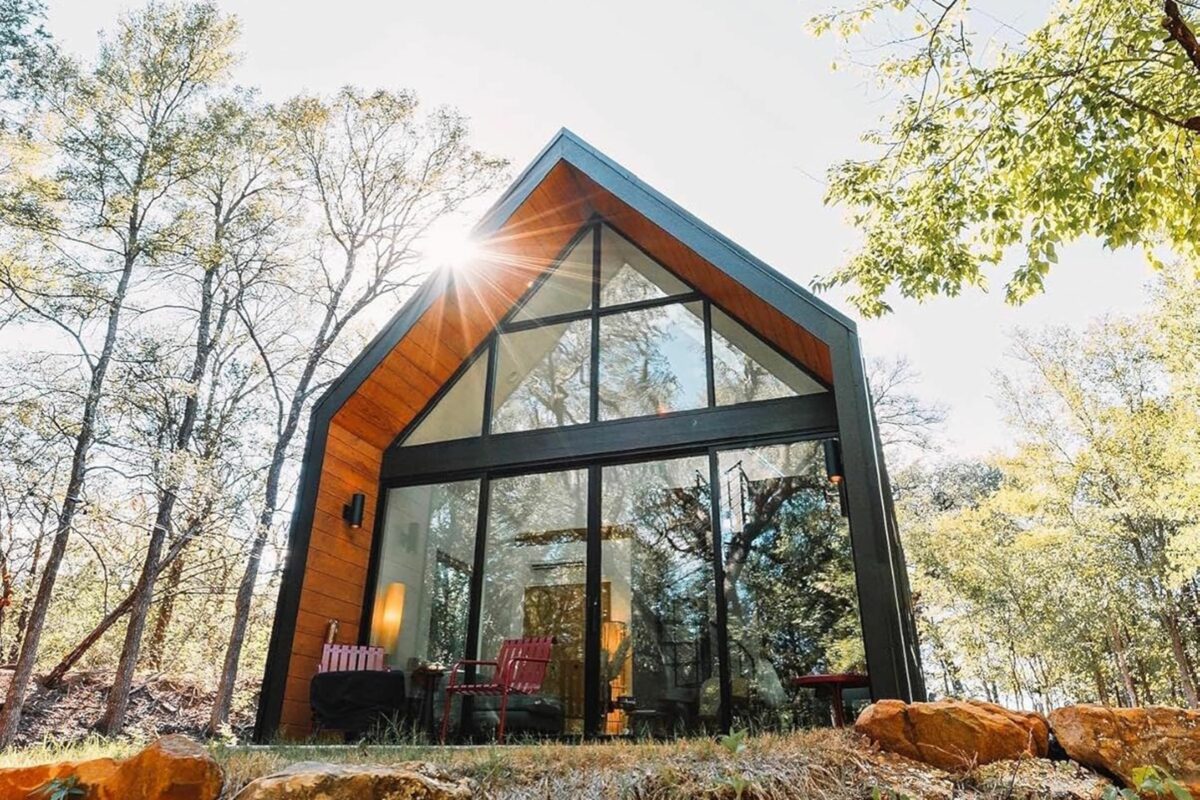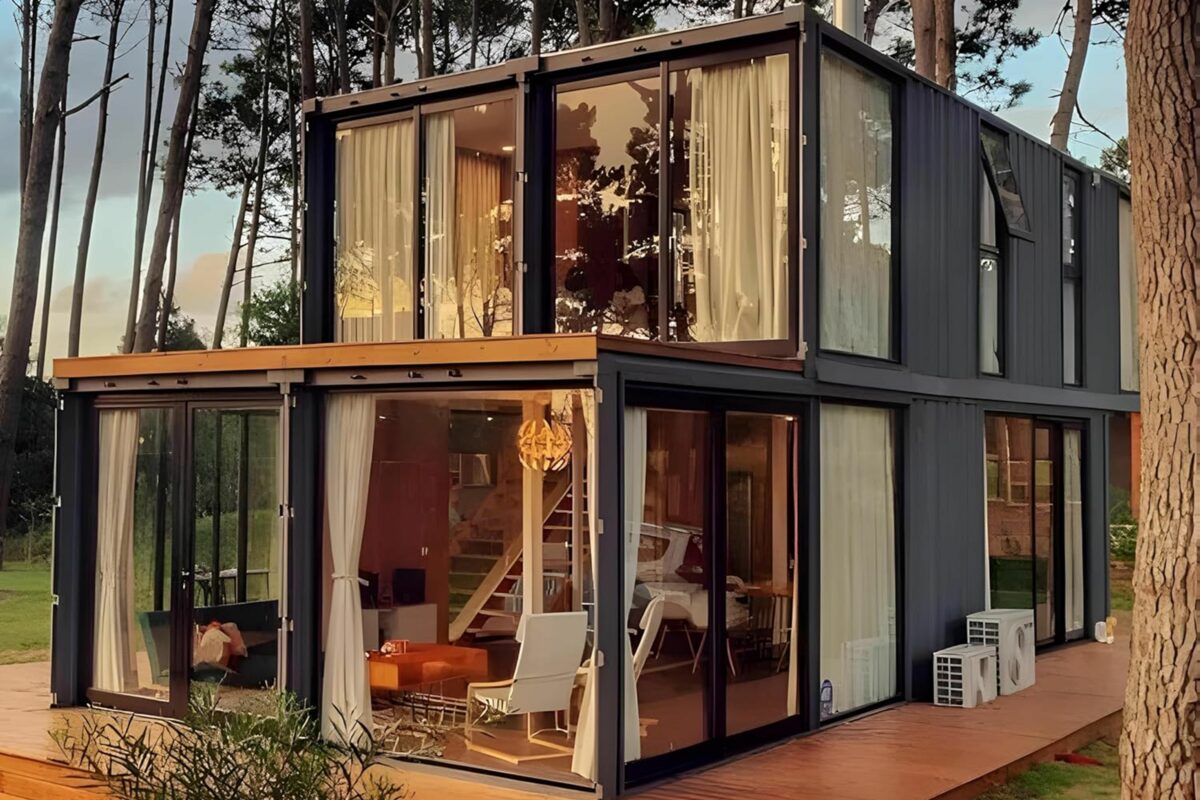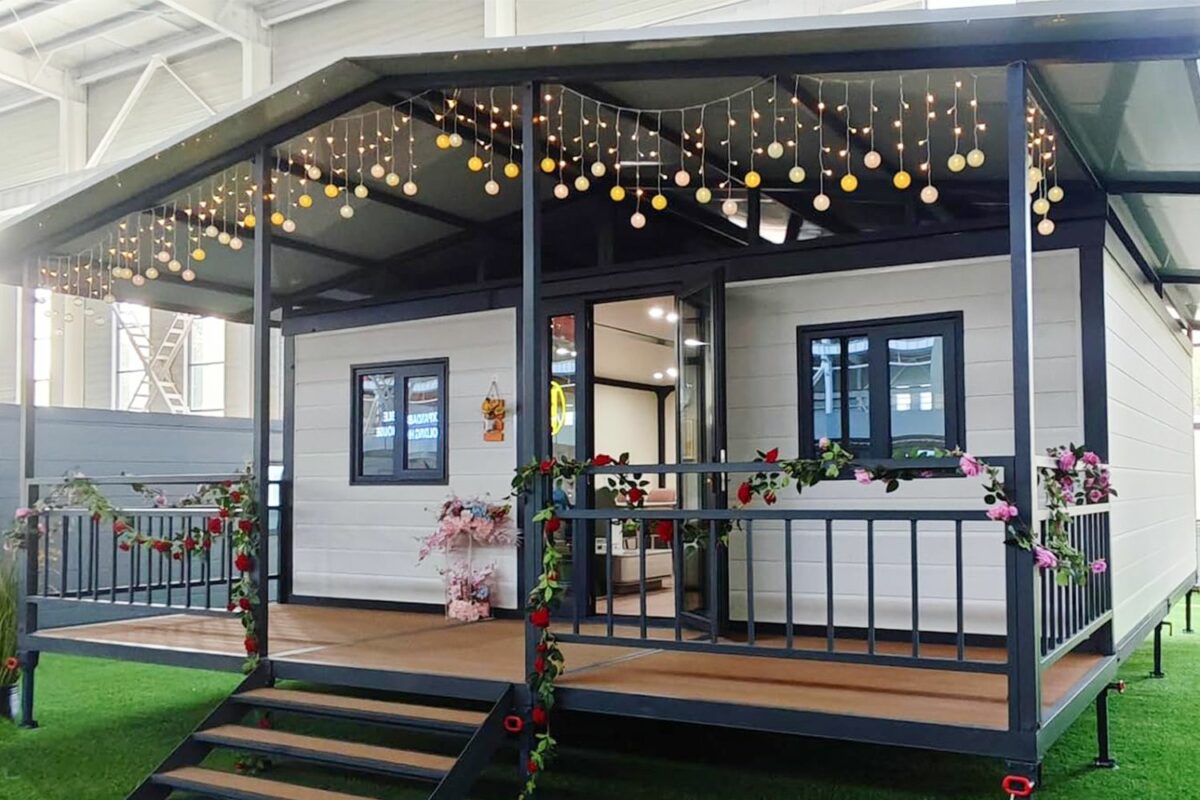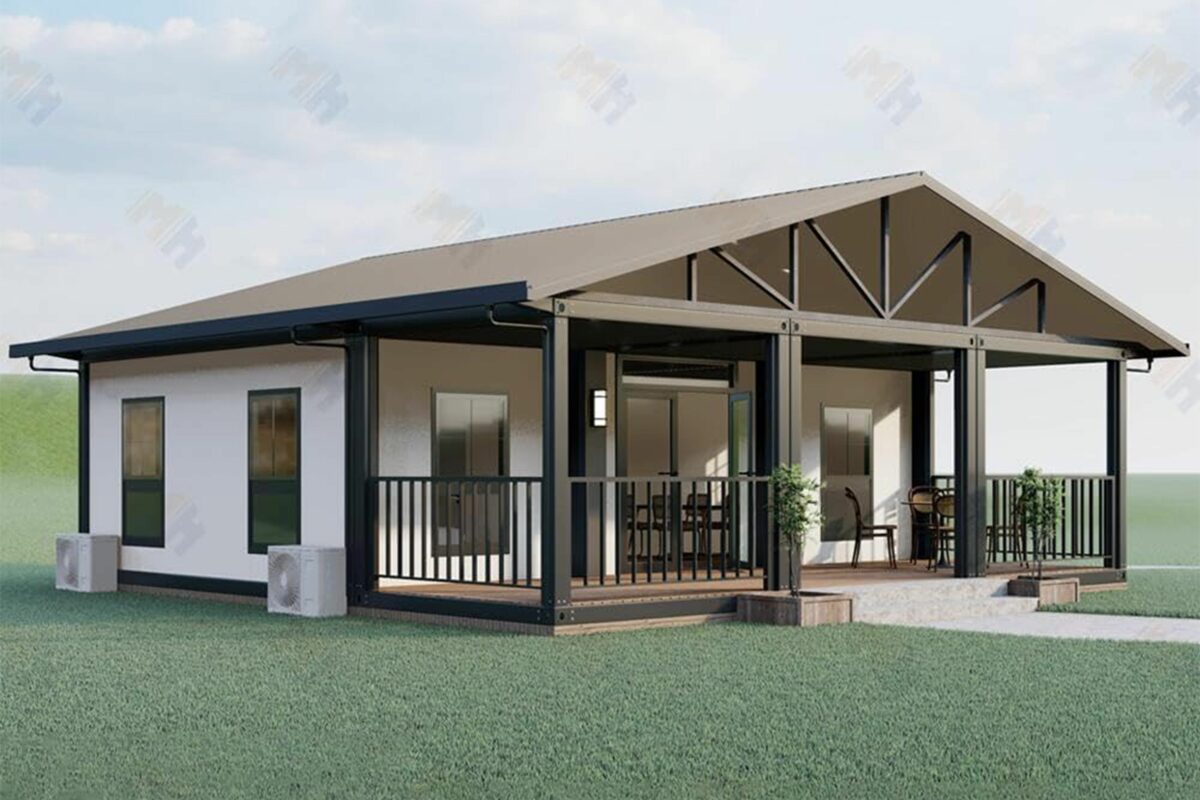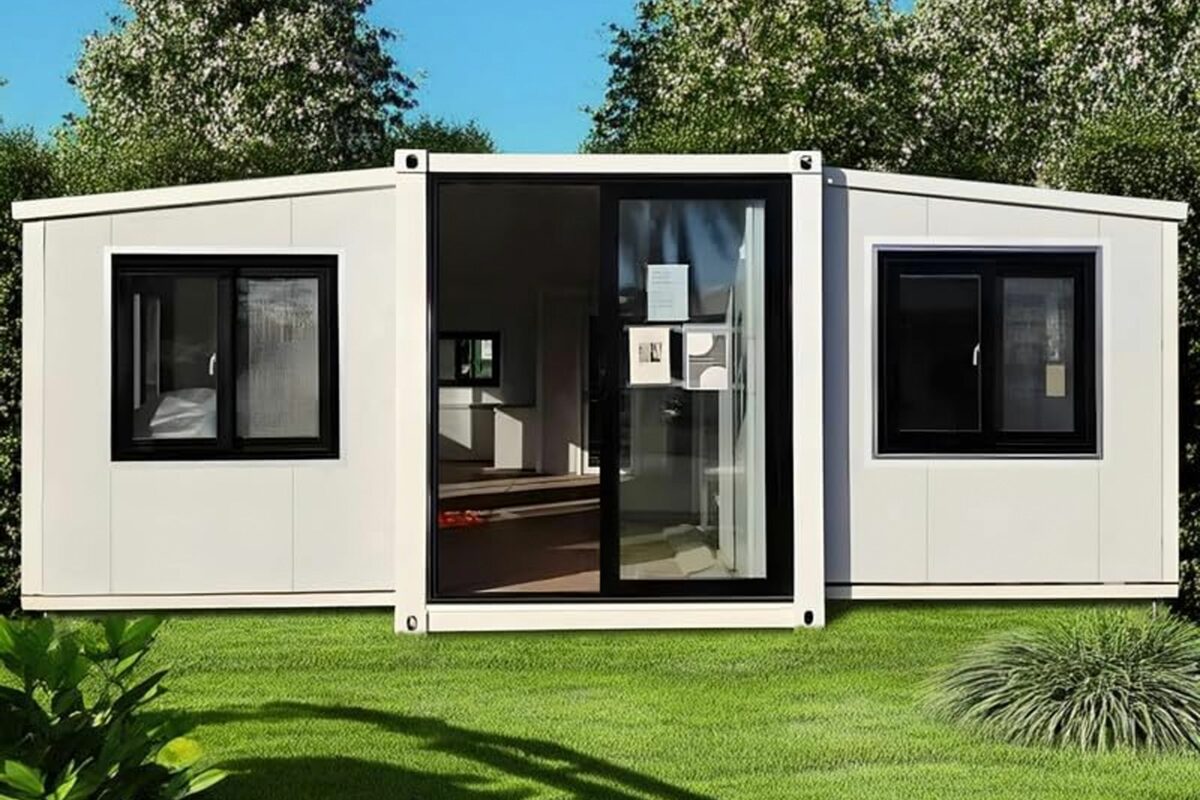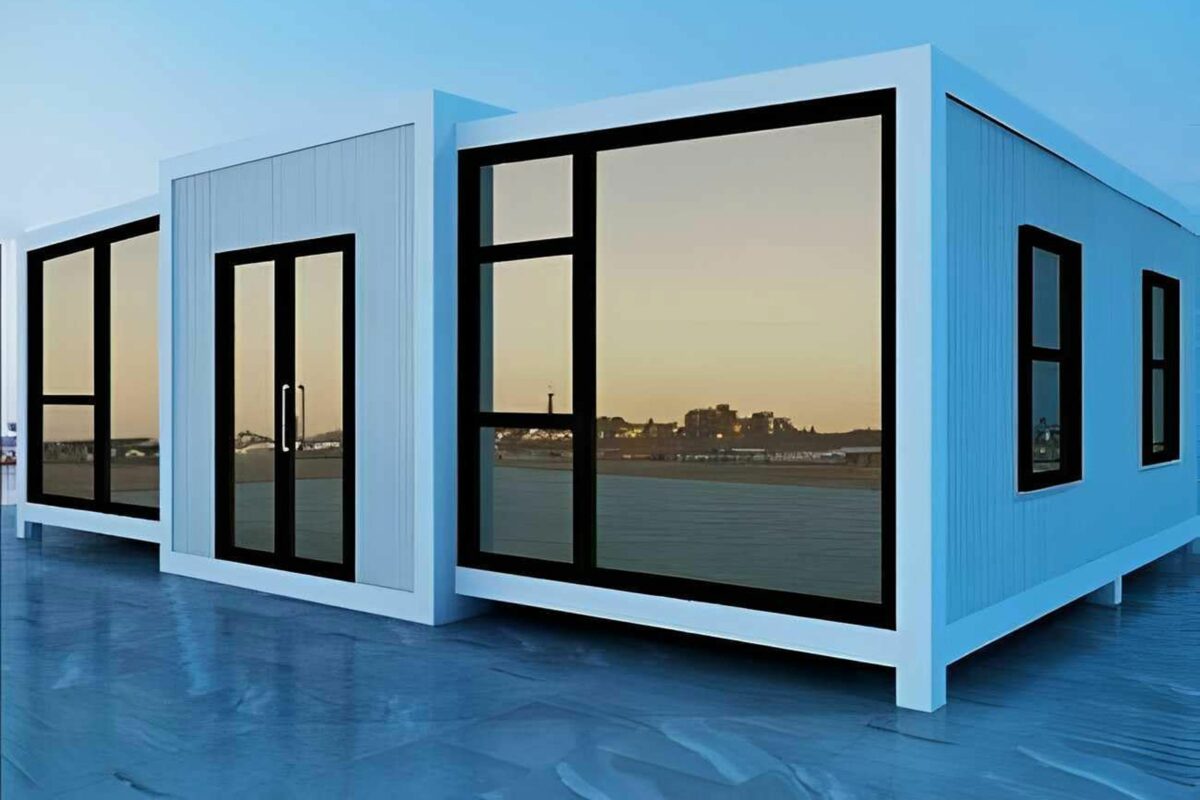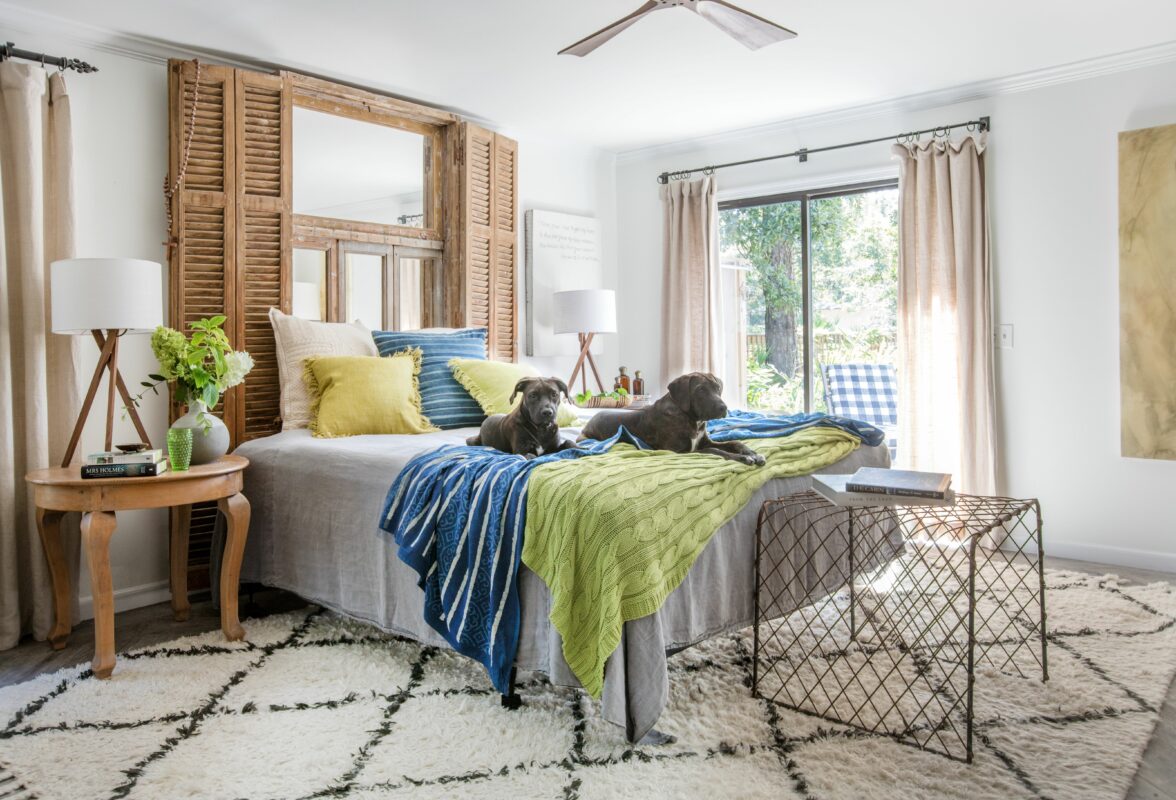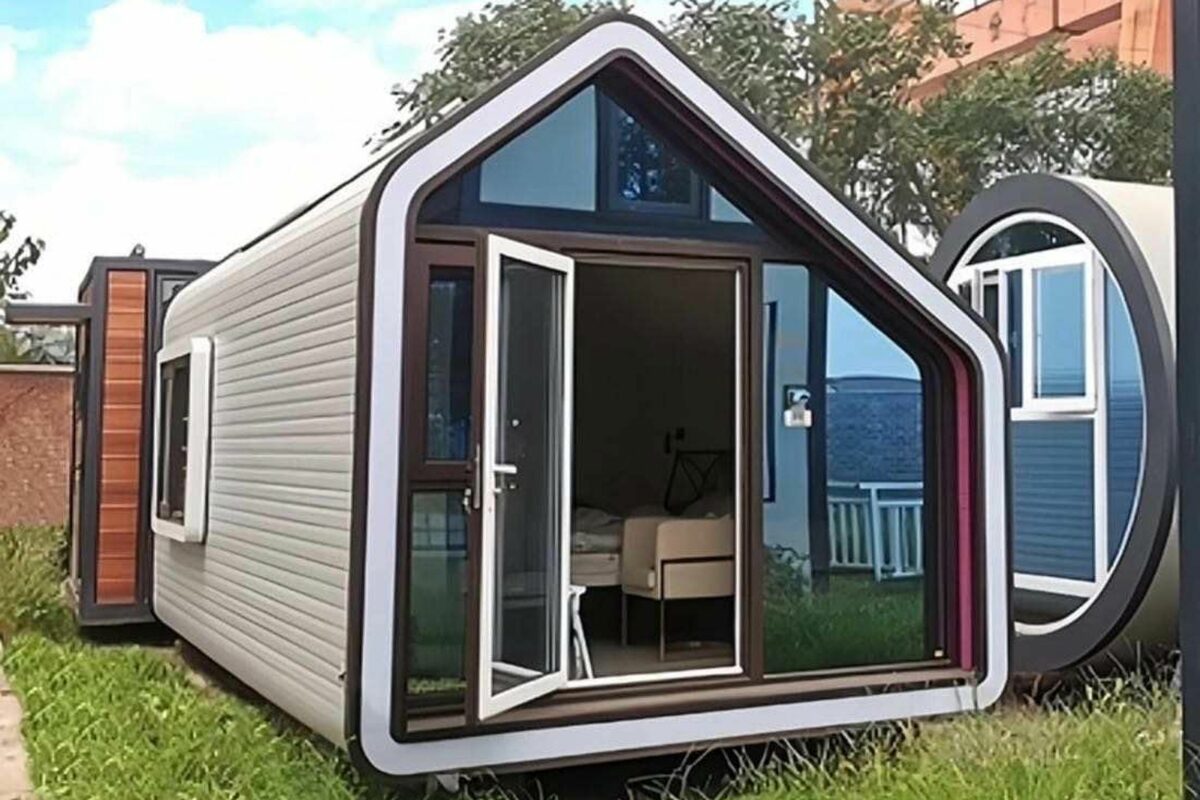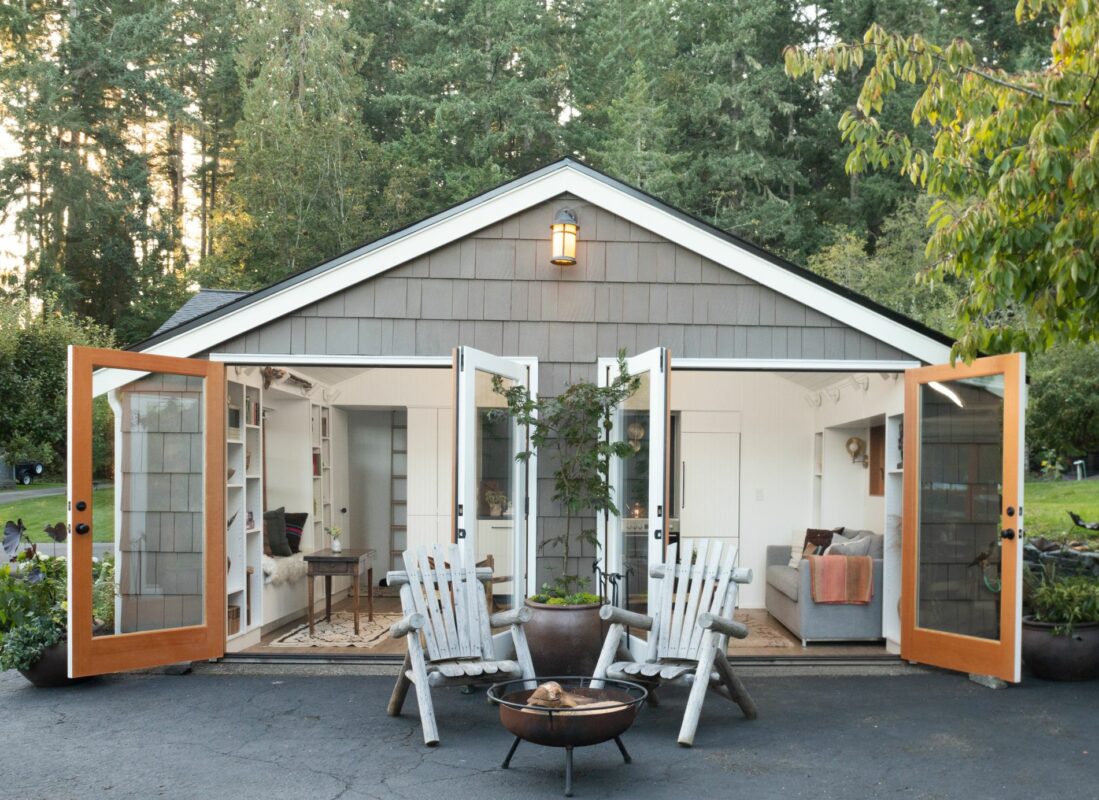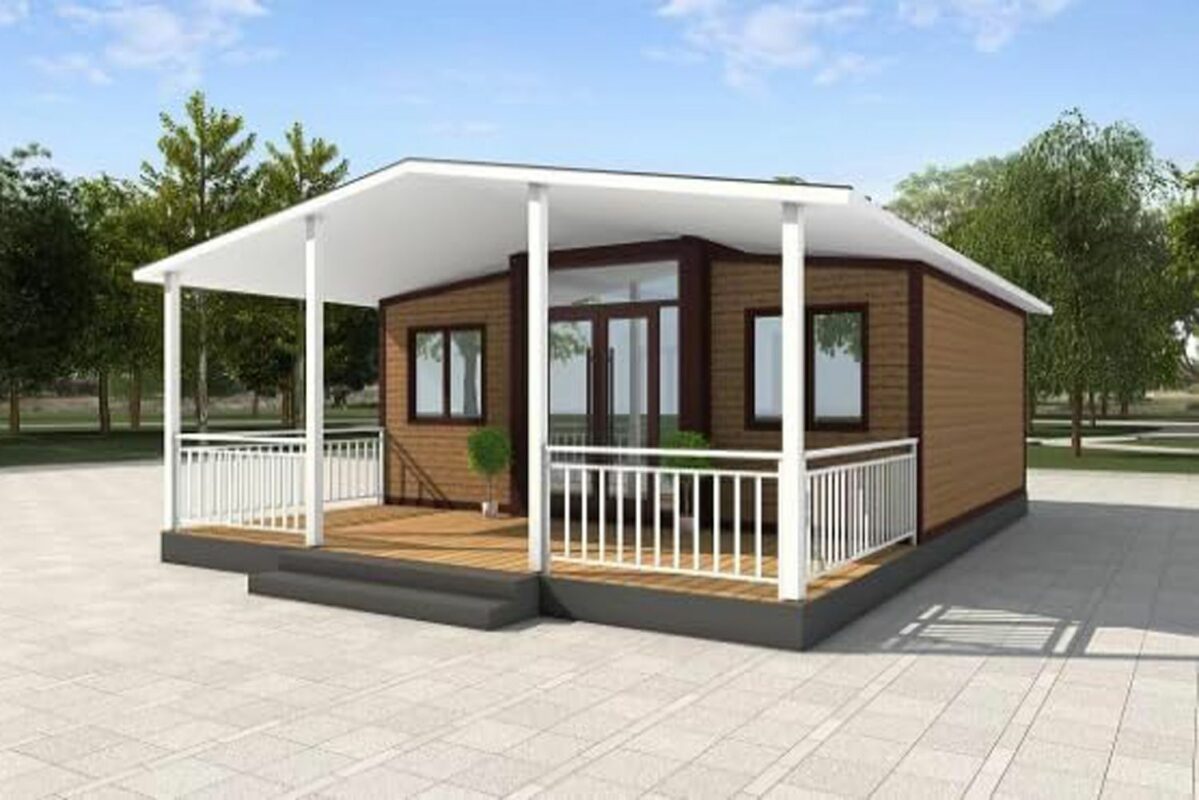As mortgage rates and home prices soar, the appeal of tiny homes continues, offering a solution for low-cost, minimalist living. If you’ve considered switching to the tiny lifestyle, you likely have plenty of questions about best practices and how it actually works. Below, experts offer answers to some of the most frequently asked questions regarding tiny home living.
- Dominic Sims is the CEO of the International Code Council.
- Erin Hybart is a realtor in Louisiana.
- Tammy Sons is a tiny-homeowner.
How Small Is a Tiny House?
How small is a tiny home, really? Local building codes will impact the size requirements of a tiny home, but there are some general guidelines. Tiny homes are defined as single-family residences less than 400 square feet, according to the International Residential Code (IRC). Dominic Sims, CEO of the International Code Council, explains that tiny homes often meet the same qualifications as typical residential homes—they’re just (a lot) smaller.
“Houses under this size can use provisions of the IRC that recognize the smaller space and provide requirements based on that including lower ceiling heights and loft spaces,” he says. “While a house may exceed the threshold in the IRC for a tiny house, a potential homeowner or a community may still consider it a ‘tiny home.’ In that case, unless the jurisdiction indicates otherwise, the home would need to meet the same requirements as other residences in the community.”
Erin Hybart is a Louisiana realtor and a tiny house enthusiast. She says tiny homes are outlined in the code as having an eating, bathing, and sleeping space.
“Tiny houses range from 100-400 square feet. If the tiny house is on wheels, it is less than 8 feet x 6 inches wide, and 13 feet x 5 inches high,” Hybart says. “A tiny house on a foundation can come in lots of dimensions but the 20 x 20 feet or 16 x 24 feet seem to be the most common in the research and ones I have seen.”
How Much Does a Tiny House Cost?
Tiny homes might be small, but their price tags can range based on the types of material used, customization options chosen, and high-tech features included. “A DIY tiny home can cost as little as $20,000 while professionally built homes often range from $50,000 to $150,000,” Hybart says. “Bigger homes with high-end finishes will push the budget higher. A tiny house on wheels has to have specialty items that allow it to travel so its costs are higher.”
Tammy Sons built a tiny house as a second home in Tennessee and says the most common question she gets about the tiny house lifestyle is about the cost. “We paid $22,000 for our tiny house, and we had to wire and plumb it, hang the sheetrock on the walls, and insulate it,” she says. “The rest was already prefab. One that was wired and set up would have been $12,000 more, but we wanted electrical plugs in specific areas, so we decided to finish it ourselves.”
Like standard single-family homes, you can pay a developer to build your home, you can build it from scratch, or you can purchase a kit to build it yourself. Each of these options greatly affects the price.
Ellie Lillstrom
What Are the Rules for Building a Tiny House?
While the IRC stipulates a maximum size for tiny homes, there’s more to it according to your local municipality. Sims says there are several rules based on how you will use your tiny home.
“If the tiny house will be used seasonally or as a temporary dwelling, different standards may apply,” he says. “For example, structures used intermittently, like a vacation cabin in the woods or a recreational vehicle, are subject to specific standards tailored to their intended use.”
Hybart points out that aside from the IRC, there are few national regulations. “Zoning laws for tiny houses are mostly local, though some states have more flexible regulations,” she says. “If your tiny house is on wheels, parking will be a challenge as some areas have restrictions because the structure is seen as a motor vehicle.”
To learn more about what’s allowed in your area, check with your state, county, and city governments.
Where Can You Buy a Tiny House?
As tiny homes grow in popularity, more and more builders and manufacturers have jumped in on the action. “You can buy new or used tiny homes from manufacturers, individual sellers, or tiny house communities,” Hybart says. “Reputable builders include Tumbleweed Tiny House Co., Tiny Heirloom, and Timbercraft. Tiny house kits are a good option for DIYers who need some guidance but want to save money.”
Sons purchased her tiny home from local Mennonite craftsmen and has been pleased with the durability and construction. You can also purchase tiny homes secondhand. “We see them on Facebook Marketplace for sale at deep discount rates, but we opted to have ours built in the manner which would be most comfortable for us,” Sons says. Even Amazon sells kits, but not all are built to the same standards.
How Do Tiny Houses Handle Water and Waste?
Tiny homes can be equipped with water and plumbing systems the same way a normal-size single-family home is. “Some tiny houses on a permanent foundation will utilize the typical utility hookups,” Hybart says.
But because many tiny homes are built on new plots of land without hook-ups to municipal water and sewer, there are other options as well. “Many tiny homes use tanks for water and composting toilets for waste if they are on wheels,” Hybart says. “Those tanks must be filled and emptied, respectively. Sustainable options include rainwater harvesting and graywater systems for water conservation. I have seen incredible small water filtration systems that can filter rainwater for drinking and cooking purposes.”
Sims says many tiny homes are designed this way with sustainability in mind. “For example, composting toilets are a popular choice for waste management, as they reduce water use and can be managed off-grid,” he says. “Solutions like this must adhere to local plumbing codes to ensure safety and effectiveness. The International Plumbing Code offers guidance on these systems, helping to ensure that tiny homes remain both functional and environmentally responsible.”
When it comes to electricity and energy, Sims suggests consulting the International Energy Conservation Code (IECC) and International Fire Code (IFC) for guidance.
How Do You Maximize the Space?
For the average person, condensing a life to fit a tiny house can be challenging. To combat this, focus on smart storage. “Buy lots of storage for under beds, cabinets, and overhead storage,” Sons says. “Limit trinkets and clutter by minimizing comforters, clothing, and linens.”
Be sure to prioritize storage when building and designing your home. “Having a more narrow space will impact layout choices and force you to get more creative with space utilization,” Hybart says. “Maximize space with built-in storage, multi-purpose furniture, and open layouts. Vertical storage and utilizing even the ceiling space is necessary to get all your functions in the space.”
How Do You Adjust to the Lifestyle?
Experts agree you’ll also have to adjust to living in a smaller area. “Before committing, consider the lifestyle,” Hybert says. “Tiny living means less space, fewer possessions, and often simpler living.”
“The major consideration is this: can you downsize and either store half of your things or do without them?” Sons says. “That’s the hardest thing that I would have to consider. I couldn’t do this after 40 years of marriage. I cherish many things I want to be laid out to display all the time.”
Advice for Tiny House Newcomers
Oftentimes the excitement around tiny home living has to do with decorating a new space and fantasizing about a simpler life, but there’s much more to it. That’s why experts tell newcomers to test the waters first.
“Consider renting a tiny house for a few months to get used to the space,” Hybart says. “While it won’t be a sure thing, at least you can get an idea and allow your brain to function in the smaller space. If more than one person will be living in the space, including pets, make sure everyone has their own personal space.”
Finally, do your homework regarding zoning laws, codes, and regulations. “It is important for prospective tiny homeowners and builders to research zoning laws and building codes in the desired location to ensure that a tiny home is allowed and meets all regulatory requirements,” Sims says.


